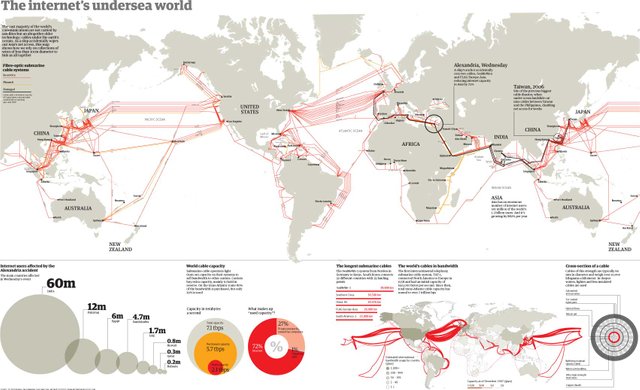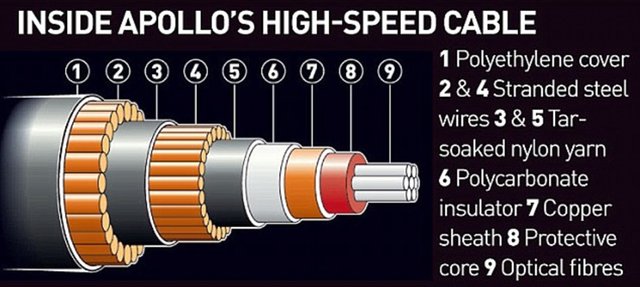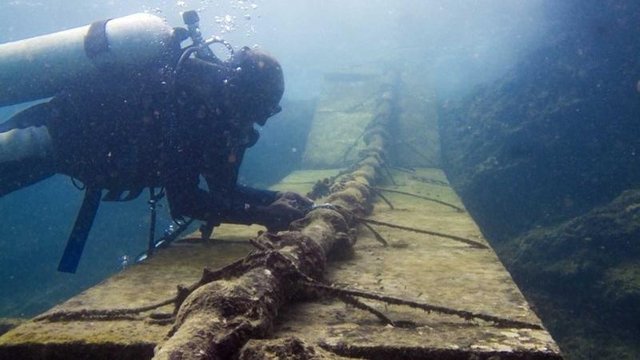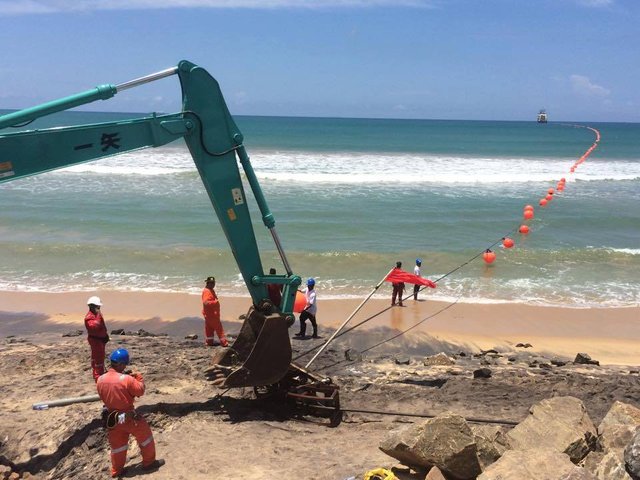⏩⏩⏩⏩ Yes, your internet is actually covered in Vaseline.⏪⏪⏪⏪

We never stop hearing about how the internet's in the cloud.
But really, it's in the ocean.
About 300 undersea fiber optic cables are responsible for 99% of international data traffic.
It's basically the same way we connect to each other in a single country, except under water instead of underground.
They transmit PewDiePie from Europe to America and they connect stock traders in New York and London.
And these cables, placed by private companies, are the backbone of the internet, but if you
held one in your hand it'd be no bigger than a soda can.

There are just a few layers of protection from the water, including petroleum jelly
(yes, your internet is covered in Vaseline). They're vulnerable to earthquakes,
at least a few times, confused sharks have bitten them.
But many cables are beneath sea life, because in some places they go as deep underwater
as Mount Everest is high.
Ships lower a plow that digs a tiny groove in the ocean floor, lay in the cable, and
it's naturally buried by sand, thanks to the ocean's current.
And that process -- it's both stunningly simple and mindblowingly complex -- is responsible
for making the internet a truly global network.

It's an idea so audacious and crazy, and you think that it has to be cutting edge. And it is.
But it's also been going on for 157 years.
Electric telegraphs have been around for a long, long time.
Experiments in the early 1800s connected two ends of a garden, using a clock that revealed
letters, then they moved on to two neighborhoods, to help signal trains, and then multiple cities, thanks to the network of railroad lines.
Underwater "submarine cables" were an obvious next step. So they played around.
Instead of petroleum jelly, the first ones were coated with exotic tree sap to protect them from the water.
And though the undersea cables came in spurts -- one of the first ones was knocked out of commission by a fishing boat and by 1858 they reached around the Atlantic and across the world.
And that's how it's kind of gone since, laying cables that circle the earth's oceans.
The cables are unwound from the back of a ship, sink to the ocean floor, and the world
is connected in speeds measured in milliseconds.

There are ideas to bring the internet above sea level. Along with cell phone towers, there's internet beamed from Facebook satellites to Africa and balloons lifted by Google.
But for speedy international travel, undersea cables are still where companies like Facebook
and Google place their bets.
That's because the best way to create the cloud is still by going under the sea.
So, at the end the internet is made of tubes !? O.o
good read ! thx!
yes,pretty much...